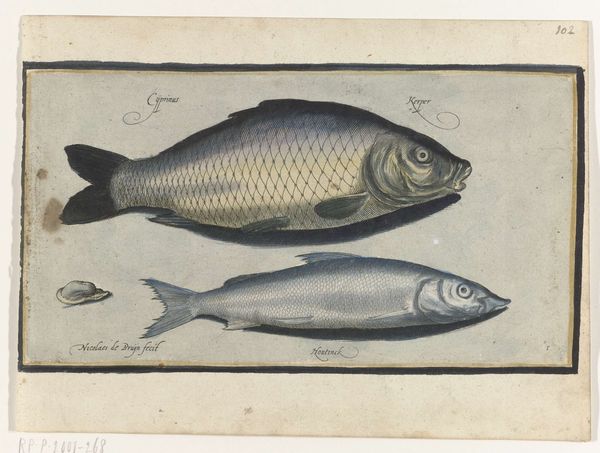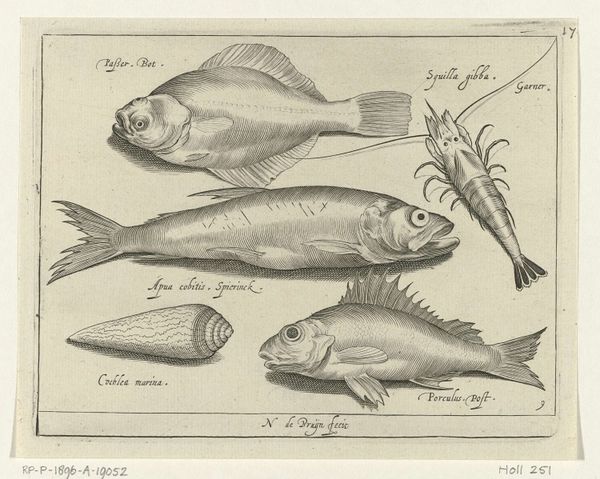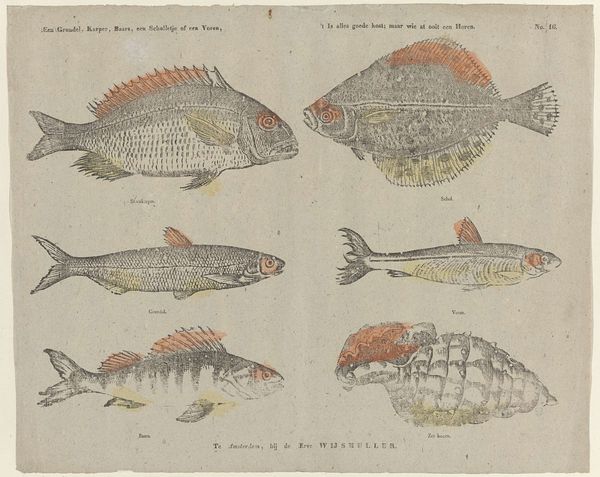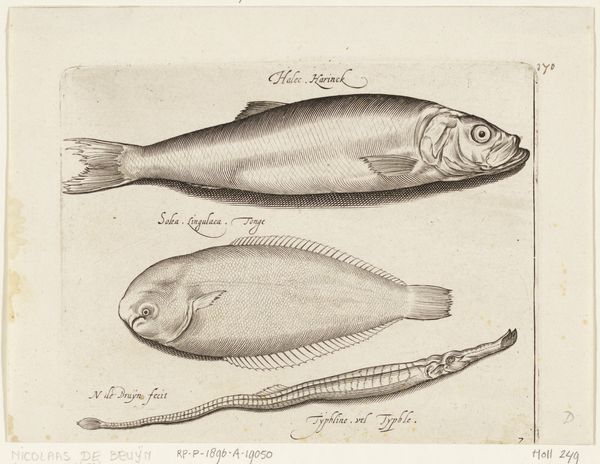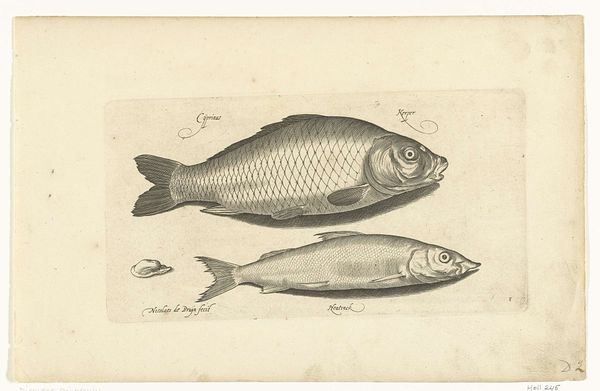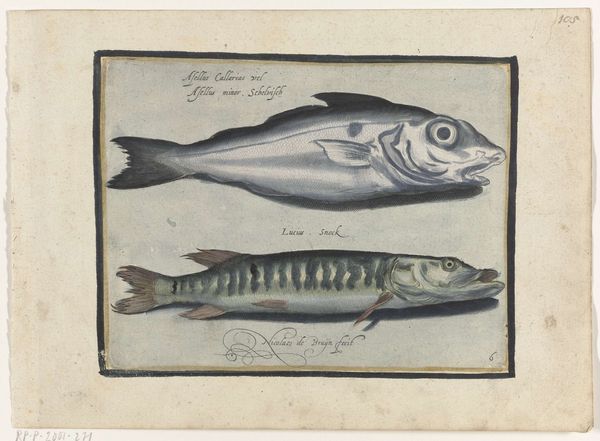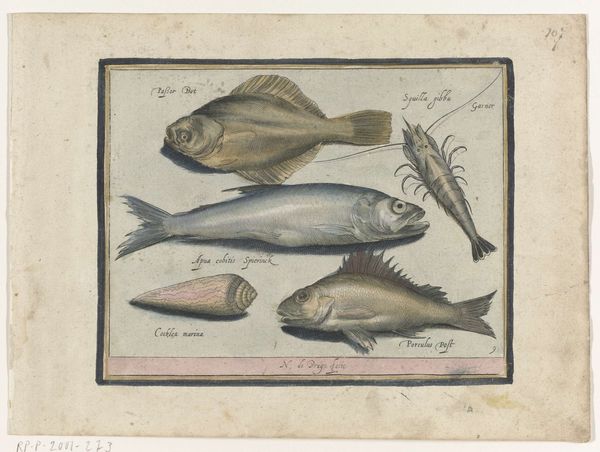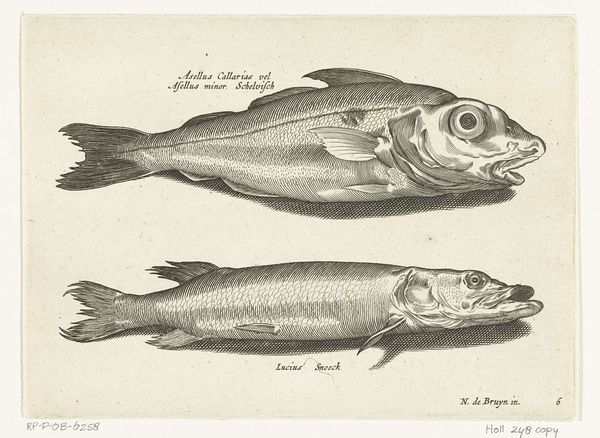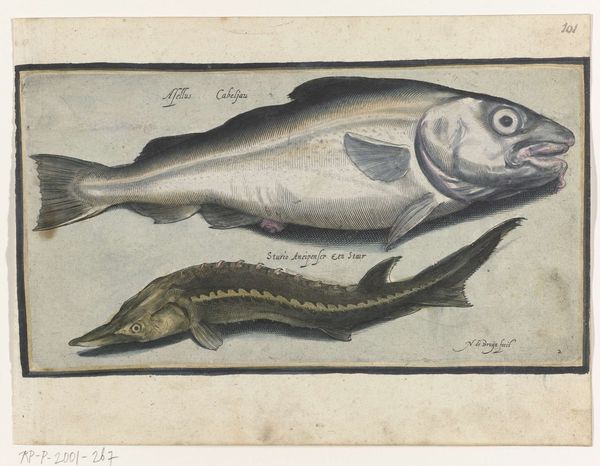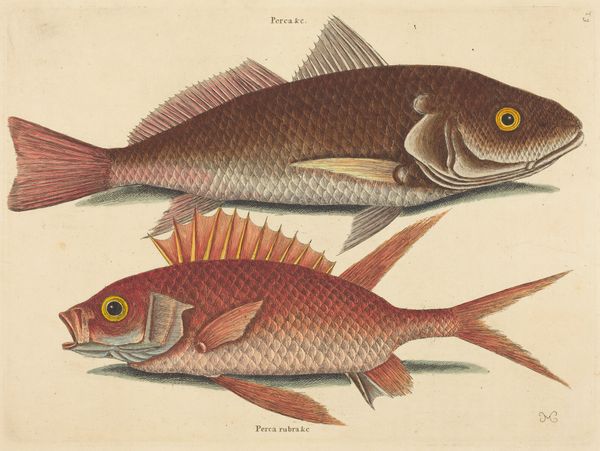
drawing, coloured-pencil, print, paper, engraving
#
drawing
#
coloured-pencil
#
dutch-golden-age
# print
#
pencil sketch
#
figuration
#
paper
#
coloured pencil
#
line
#
watercolour illustration
#
engraving
Dimensions: height 413 mm, width 307 mm
Copyright: Rijks Museum: Open Domain
Editor: This print, "Dit zijn vier schoone viszen," dating roughly from 1558 to 1804, is attributed to Erven de Weduwe Jacobus van Egmont and is currently held at the Rijksmuseum. It's an engraving with coloured pencil on paper, featuring four different types of fish. The printmaking and hand-coloring processes look quite laborious to me, almost mass produced with individual care. What stands out to you about this piece? Curator: I’m particularly interested in the printmaking process and the materials employed. Engraving, a reproductive medium, would allow for the dissemination of these images to a broader audience, but hand-colouring reintroduces unique value. How does the layering of labour – the reproducible print versus individual application of colour – impact our understanding of value and authenticity here? Was this for a scientific textbook or aimed towards popular consumption? Editor: That's an interesting question. The coloring feels somewhat arbitrary, not precisely realistic in terms of naturalistic depiction of each type of fish. Perhaps the process of creation was more important than absolute accuracy. It almost democratizes knowledge about marine life. Curator: Precisely. Think about who was doing the colouring and under what conditions. Was this piecework, farmed out to lower-paid workers? How does this influence the ‘aura’ of the artwork? This collision between mass production and individualized touches offers a complex insight into the economic structures that allowed its making. And consider the implications of printing these in batches – what were the labour costs at the time and where was the production process? Editor: I never thought of it that way before. Viewing it through a materialist lens really changes how you perceive not just the image but the conditions that led to it. It seems as if this piece's value is less in its artistic skill and more in its implications concerning material and distribution processes. Curator: Exactly! By examining the labour and materiality embedded within this seemingly simple image, we uncover the hidden social and economic relationships of the period. This redefines 'art' beyond individual expression and allows insight into wider structures of power and production.
Comments
No comments
Be the first to comment and join the conversation on the ultimate creative platform.
